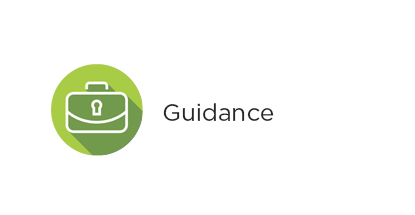
Purpose of the Law Society of British Columbia Trust Report
All lawyers who handle funds for clients or third parties as part of their practice are subject to rigorous trust assurance standards that are set out in the Law Society of British Columbia (the “LSBC”) Rules. Every practising lawyer in BC must file a completed trust report for reporting periods of 12 months covering all the time that the lawyer is a member of the LSBC. The trust report is designed to be an educational tool to keep law practices informed of their trust responsibilities. Where there is more than one lawyer at a firm, only one trust report is required for all lawyers of that firm.
Practising insured lawyers that do not maintain a trust account are only required to complete Section A of the trust report which is a description of their practice and Schedule 2 which is an annual practice declaration. Lawyers that do maintain a trust account(s) are required to complete Section B of the trust report which is a financial profile as well as Schedule 1 which is a savings institution or bank account listing.
The Accountant’s Report
The LSBC has the discretion to require an accountant’s report which is also known as Section C of the trust report. This permits the LSBC to continue to require an external review of the accounts of any lawyer that warrants such a review.
Details of the process can be reviewed on the LSBC’s website. In addition, the following resources are available:
Filing a Trust Report and Relevant Standard
The trust report is an online form. At the end of the law firm’s reporting period, they will be sent an annual filing notice which provides them with a new filing ID which they need to access the form. The trust report is due within three months of the end of each reporting period and late filing can result in suspension of membership and late penalties.
If the lawyer is required to file an accountant’s report, they need to engage a qualified external accountant to complete the accountant’s specified procedures section of the report (Section C noted above). The law firm will need to log into the report and complete the lawyer’s sections before the accountant is able to access their section.
The external accountant is required to be licensed for public practice at a review license level as per the licensing regulations found here.
It is important to note that as you have been requested to perform auditing procedures that there is an applicable section of the CPA Handbook – Assurance to adhere to. Canadian Standard on Related Services (CSRS) 4400 Agreed-upon Procedures Engagements provides guidance on how to accept and engage, perform, document and report on these types of engagements. An agreed-upon procedures (AUP) engagement does not constitute an audit or a review engagement as it provides no assurance conclusion and no opinion. Rather it is intended to only report the factual results from the procedures performed, and the users of the report would need to draw their own conclusions. In performing your engagement, you should also ensure that your documentation is sufficient to provide evidence that you understand and have adhered to these standards.
Juricert ID
As an accountant completing the accountant’s report a necessary first step in this process to obtain a Juricert ID - details can be accessed at www.juricert.com. Juricert is a unique initiative of the LSBC that creates a trusted digital credential record that can be used to validate identity. It must be emphasized that this is not a digital signature that might be used in other places.
Reporting on the Procedures Performed
One of the key issues to overcome with the LSBC Accountant’s Report process is the prescribed form of reporting. As stated above the LSBC provides an online form for the accountant to complete. The online form makes yes/no responses available to the accountant and some space to provide more detailed responses but in general the prescribed format can be cumbersome if significant deficiencies are noted when conducting the engagement. Furthermore, it may not be clear to the LSBC and to your client what the nature of the engagement is, what was performed, what was not performed, and what the detailed findings were.
This is not an uncommon problem when regulators and other bodies request an accountant to report in a prescribed format. CSRS 4400 paragraph C30 describes the information that shall be included in the AUP report. As such, firms are expected to issue their own report to the LSBC and their client, in accordance with the AUP standard, in addition to completing the prescribed online forms. This way they can rest assured that they have performed the engagement in accordance with CSRS 4400 and properly communicated the nature of the engagement, its limitations, and the results of the work performed to both the LSBC and the client.
CPABC offers a professional development course on performing engagements in accordance with CSRS 4400. Open the CPABC PD portal that has a listing of PD seminars available.
Rate this Entry
Current rating: 16 yes votes, 7 no votes

